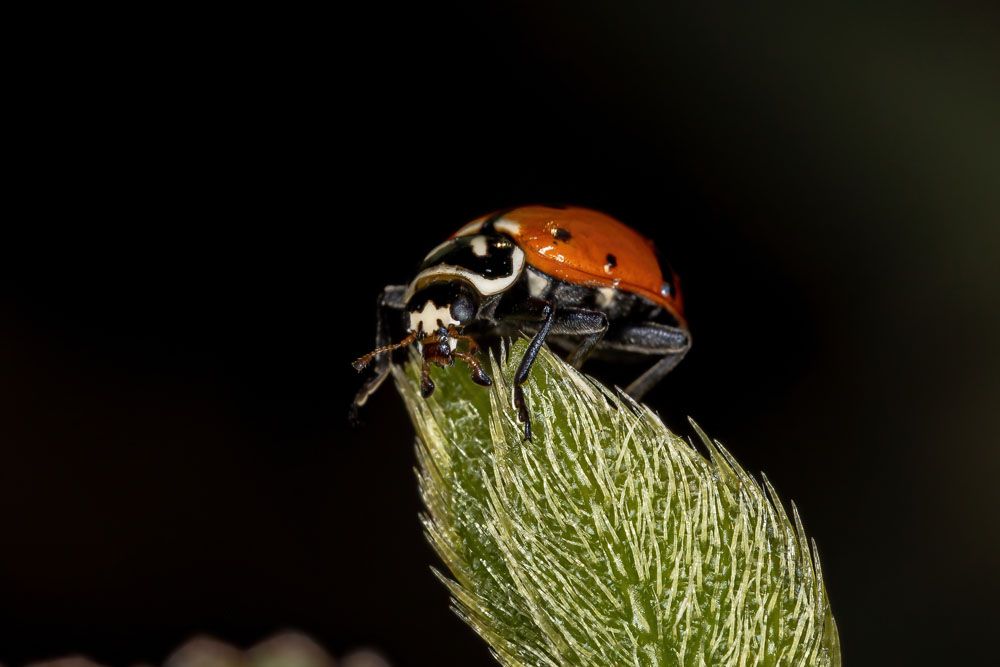
Convergent Lady Beetle – Hippodamia convergens
Convergent Lady Beetle
Latin Name: Hippodamia convergens
Common Name: Convergent Lady Beetle
Appearance: Slightly elongated in shape, convergent lady beetle is dome-shaped on top and flat on the bottom while oblong if seen from above. It is 4-7 mm long and has a short head with short and clubbed antennae. The thorax has black color with a white margin and two central lines which are angled towards each other showing a convergent pattern; the reason for its name. The wings are orange in color and have more or less 13 black spots.
Host Plants or Food: Soft-bodied insects, especially aphids, scales, and mites, thrips. It also feeds on flowers’ nectar when there is a shortage of prey.
Territory: Convergent lady beetle is one of the most common American lady beetles. Being native to North America, it is found throughout America, including Southern America, Central America, Western Canada, Southern Canada, New Jersey, Texas, and California.
Mode of Damage: Beneficial Garden Insect
Habits and Life History:
- Convergent lady beetles are found almost on every crop where there is an attack of aphids, thrips, mites, and other such insects.
- Larvae just suck the content from the prey while adults can eat the whole prey.
- They are commercially available in North America to control the attack of the aphids.
- Like other beetles, convergent lady beetles also pass through four life stages: egg, larva, pupa, and adult.
- Females lay eggs near the prey ranging from 200 to 1000 during their life span of two to three months.
- Eggs are yellow in color and spindles shaped and laid in clusters.
- Larvae are dark brown to black with 3 pairs of legs and resemble small alligators.
- Pupae are hemispherical and are less elongated with orange color and irregular rough black spots.
- Convergent lady beetles usually reproduce two generations per year.
